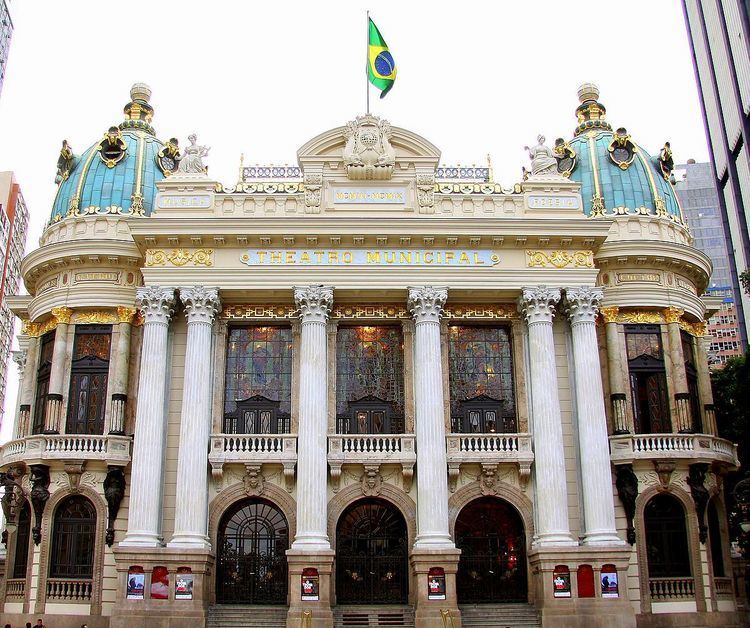Catalogue W219 Form Chôros | Genre Chôros | |
 | ||
Melody Lundu característico (Joaquim Antônio da Silva Calado) Composed 1925 (1925)–1942 (1942): Rio de Janeiro Dedication Arminda Neves d'Almeida | ||
Chôros No. 6 is an orchestral work written between 1925 and 1942 by the Brazilian composer Heitor Villa-Lobos. It is part of a series of fourteen numbered compositions collectively titled Chôros, ranging from solos for guitar and for piano up to works scored for soloist or chorus with orchestra or multiple orchestras, and in duration up to over an hour. Chôros No. 6 is one of the longer compositions in the series, lasting about 25 minutes in performance.
Contents
History
According to the score and the official catalog of the Museu Villa-Lobos, Chôros No. 6 was composed in Rio de Janeiro in 1926, and the score was dedicated to Arminda Neves d'Almeida, in 1936. It was premiered in Rio de Janeiro on 18 July 1942 by the Orquestra Sinfônica do Theatro Municipal, conducted by the composer (Villa-Lobos, sua obra 2009, 22–23). However, Lisa Peppercorn casts doubt on the date of composition, based on the fact that it was Villa-Lobos's habit to secure premieres of his works as soon as they were completed. In her opinion, the delay between the nominal date of composition and that of the world premiere suggests that, although the score may have been begun or at least conceived in 1926, it was probably not completed until shortly before the premiere in 1942 (Peppercorn 1991, preface, unpaginated). Based on his detailed analysis of the score, Guilherme Seixas concludes that stylistic considerations do not support a date of completion as early as the mid-1920s, and agrees with Peppercorn's hypothesis (Seixas 2007, 63–64).
Analysis
The composer describes the general harmonic atmosphere of the work as having
a kind of romance of the backcountry atmosphere of northeastern Brazil. The climate, color, temperature, light, chirping of birds, the scent of honeyed grass between the hen-houses, and all elements of nature of a hinterland served as inspiration for motives in this work; however, it does not represent any objective aspect nor a descriptive flavor. (Villa-Lobos 1972, 200)
The opening melody, played by a flute (one of the most typical instruments of the improvising choro ensembles) is a seresteiro theme, sharply contrasting with the polytonal harmonic environment, which "leads us to hazy stopping points of simultaneous sounds among the forests of the Amazon valley" (Villa-Lobos 1972, 200). This melody, which enters over the soft sounds of Brazilian percussion instruments and strings, is a slightly altered quotation of Lundu característico by the flautist and band-leader Joaquim Antônio da Silva Calado, who was one of the founders of the popular choro genre in the late nineteenth century (Appleby 2002, 84). The alterations, however, make it also similar to a popular melody called O Nó (The Knot), by the trombonist Cândido Pereira da Silva, nicknamed "Candinho Trombone" (Negwer 2008, 151). The flute is shortly joined by a saxophone, and the conclusion of their duet marks the end of the first section (Appleby 2002, 84).
The form of Chôros No. 6 unfolds as a series of episodic sections, which are "clear and contrasting in tempo" (Appleby 2002, 84). However, there is some disagreement about their number and interrelationship. Adhemar Nóbrega describes six sections (Nóbrega 1975, 53–60), while Eero Tarasti finds there are no fewer than sixteen sections (Tarasti 1995, 108–16, 150). More recently, Guilherme Seixas proposes nine sections, some of which are subdivided (Seixas 2007, 116).
